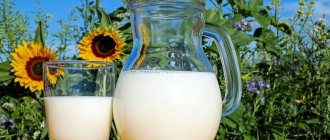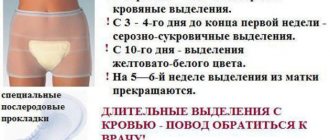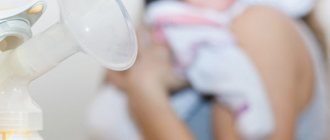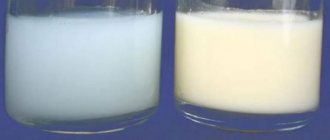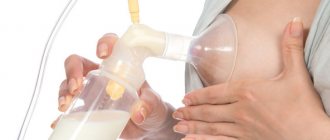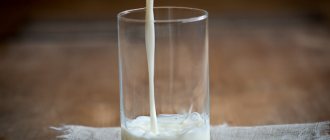In Russia, they are creating a GOST that will completely ban the presence of antibiotics in raw materials and finished dairy products. According to Chairman of the Technical Standardization Committee "Milk and Milk Processing Products" of Rosstandart Arkady Ponomareva, the adoption of new standards is associated with the need for more stringent standards for the content of antibiotics in dairy products. The new GOST may become mandatory throughout the country, writes the Izvestia newspaper.
As Elena Yurova, head of the testing laboratory of the All-Russian Research Institute of the Dairy Industry , the presence of antibiotics in milk is still prohibited in Russia. However, in 2020, decision No. 28 of the Eurasian Commission was adopted “On the maximum permissible levels of residues of veterinary drugs (pharmacologically active substances) that may be contained in unprocessed food products of animal origin and methods for their determination,” which expanded the list of measured veterinary drugs and medicinal substances , including antibiotics. According to Yurova, this document defines specific substances, as well as in what quantities they can be present in products and by what methods they should be determined.
Questions and Answers What is antibacterial milk packaging?
Glucose
The entry of glucose molecules into the bloodstream is observed already 10-12 minutes after eating food. This process stops after half an hour. Easily digestible (simple) carbohydrates can affect the sweetness of mother's breast milk. A high content of simple carbohydrates is observed in honey, jam, grapes and sugar. Excessive intake of sugar from mother's milk is a burden on the child's body. The child develops skin problems and increased gas formation in the intestines.
Myths and reality
Myths about alcohol during lactation:
- “Beer increases the amount of milk” - ethanol sometimes increases the number of feedings (the baby asks for the breast more often), and reduces the concentration of nutrient fluid by 25%. Therefore, you cannot drink the drink to improve lactation.
- “Alcohol improves a baby’s sleep” - indeed, after a “drunk” feeding, the child has a desire to go to bed. However, such rest is shallow and disturbing. The baby cannot fully regain his strength. Sleep duration becomes shorter.
- “Alcohol does not affect the taste of milk” is a big misconception. After drinking alcohol, the baby often refuses to breastfeed, as the taste becomes unusual for him.
- “After expressing, the milk is cleared”—ethanol cannot accumulate in the breast. With the blood flow, it penetrates the glands, and then returns to the vessels again. Therefore the statement is erroneous. Drinking a lot of liquid won't help clear your milk either.
- “Severe intoxication of the mother does not pose a threat to the child” - ethanol in large volumes can greatly harm the health of the baby. In addition, with a pathological condition, all reactions in a woman slow down. She cannot provide proper care for the baby.
- “Alcohol relieves postpartum depression” - on the contrary, alcohol only worsens it.
Substances that cause fermentation
Foods containing large amounts of proteins and fats can provoke fermentation processes in the intestines.
Foods rich in plant fiber (white cabbage, legumes) can provoke increased gas formation. If a nursing woman develops flatulence, she is recommended to take enterosorbent (Smecta, Polyphepan). These drugs are not able to be absorbed into the blood, and therefore cannot pass into breast milk.
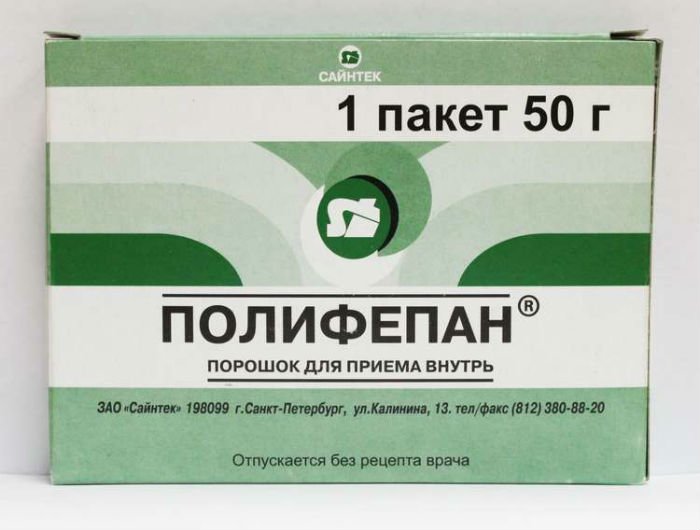
The timing of the entry of fermentation components into breast milk is individual for each nursing woman.
Nutrient penetration
Absorption of beneficial substances that the human body receives during nutrition into the blood occurs in the small intestine. The villi, located on the mucous membrane of the small intestine, are enriched with blood vessels that receive the nutrients the body needs, and then carry them through the bloodstream throughout the body to the right places. Exactly the same principle is used to get nutrients into breast milk.
Absorption into the blood

Let's explore the question: Carrots and breastfeeding
Application of sorbents

If a nursing mother has eaten raw vegetables, fresh baked goods, milk or fruits, then excessive gas formation is inevitable when digesting these foods. There is a familiar feeling of heaviness in the stomach, bloating, and belching. Gas bubbles partially escape during peristaltic movements of the intestine, but the most “persistent” bubbles still end up in the blood. They travel through the bloodstream in the body, reaching the mammary glands. The passage of gases from milk to the baby is also inevitable, since they do not dissolve in breast milk due to its fat content. If the mother does not want to harm the baby, after such food you can take a sorbent - polyphepan, smecta or activated carbon, which will help avoid excessive gas formation.
Thus, we can conclude that most products enter milk on average two to three hours after entering the mother’s body (with the exception of meat products).
Substances that cause allergies
The penetration of allergens into mother's milk is observed after 35-50 minutes from the moment of consumption of the corresponding products. The duration of admission ranges from 2.5 to 13 hours, as it depends on the rate of breakdown of food products in the body. For bakery and flour products this period is 12 hours, for dairy products - 4 hours, for fruits and vegetables - 5 hours.
Chemical preservatives contained in many foods can pass into breast milk for up to 1 week after consuming the product containing the substance.
Allergic substances increase the production of histamine, which leads to the appearance of rashes and itching. The consumption of such products by the mother contributes to the formation of an allergic reaction in the child:
- citrus;
- seafood;
- red fruits and vegetables;
- Bee Honey;
- cow's milk (whole)
- nuts and seeds.
A nursing woman is strictly prohibited from consuming food products containing the following components:
- Plant extracts and synthetic vitamin complexes. These substances are found in many soft drinks.
- Monosodium glutamate. This component is added to food products to enhance taste. A high content of monosodium glutamate is observed in potato chips and canned food.
- Acetylsalicylic acid (aspirin). High levels of aspirin are observed in sweet carbonated drinks (lemonade).
- Nitrates. A large amount of nitrates is found in early vegetables and fruits, especially greenhouse ones. The attractive appearance of fruit may indicate high nitrate content.
In order to cleanse your body of allergens as quickly as possible, a nursing woman is recommended to drink plenty of water. For quick cleaning, you can use enterosorbents (Enterosgel).
Your narcologist recommends: for nursing mothers
Experts do not recommend that nursing mothers drink vodka and other alcoholic drinks. This will have a bad effect on the child. It is also necessary to exclude coffee, chicory, seafood, citrus fruits, etc. from the diet, which can cause allergies in the baby.
Dr. Komarovsky believes that a nursing mother can drink beer. It contains vitamins, malt, yeast. But when drinking, you need to know when to stop. It is better to purchase products in a bottle rather than in a can and give preference to the non-alcoholic option.
If a woman cannot give up alcohol, then she should at least follow the rules for its use during lactation:
- The negative impact of ethanol on a child depends on how much of the substance gets into his diet. A little red semi-sweet wine is acceptable, but strong alcohol should be completely avoided. Its withdrawal takes a long time, and it can provoke severe intoxication. It can be determined by nausea, vomiting, pale skin, etc.
- For the first three months after the baby is born, you need to completely give up alcohol and stick to proper nutrition. This will help protect the newborn from disastrous consequences.
- When drinking alcohol, you need to calculate your weight. In thin women, ethanol enters the milk quickly, but its decomposition takes a long time.
- Do not drink on an empty stomach.
- It is prohibited to drink alcohol in large quantities. This will lead to severe poisoning not only of the woman herself, but also of the baby. In addition, in a drunken state, the mother is not able to control her behavior. This could lead to the death of the baby.
The analyzes proved that the amount of ethanol produced will be approximately as indicated in the table.
Expressing will not speed up the release of ethanol from the body.
Water-soluble vitamins
A certain percentage of vitamins that enter the mother’s body with food will end up in breast milk. Water-soluble vitamins include ascorbic acid (vitamin C), B vitamins, and nicotinic acid. These substances are not prone to accumulation, so a nursing woman should receive them daily.
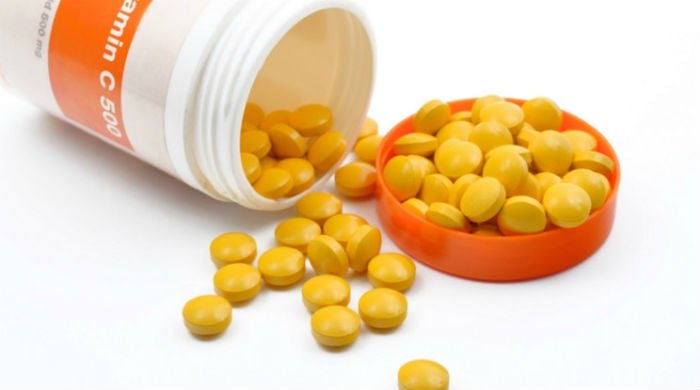
The time it takes for water-soluble vitamins to enter breast milk is from 3 to 5 hours.
The following foods are sources of water-soluble vitamins:
- Large amounts of vitamin C (ascorbic acid) are found in fresh berries, rose hips, parsley, citrus fruits and white cabbage;
- B vitamins are found in abundance in foods such as meat, organ meats, liver, legumes, yeast, nuts, spinach, hard cheese, carrots, fruits and tomatoes.
- Excess nicotinic acid is observed in seafood, chicken, liver, eggs, carrots, legumes and parsley.
How quickly does food get into milk – ladymady.ru
Breast milk is formed in the alveoli of the mammary glands from the blood and lymph of a woman. What mommy eats and drinks is broken down into molecules in the gastrointestinal tract and absorbed into the blood. From the capillaries of the breast tissue, molecules enter the milk through the cells lining the alveoli. Since food is not digested instantly, and molecules are not removed from the blood immediately, this process takes some time.
It's interesting and important to know how quickly everything happens. How many hours must pass before the molecules of the eaten cutlet can end up in the baby’s mouth?
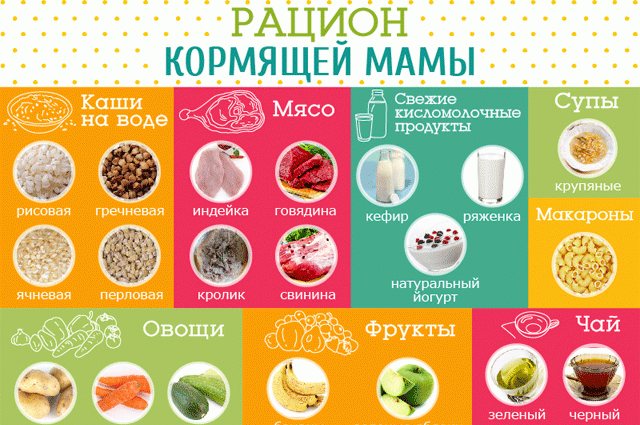
diet for a nursing motherHow long after a romantic evening with champagne can you breastfeed your baby without fear of harming his health, and when is it better to take the medicine so that the baby gets it in the smallest amount?
Every young mother who decides to breastfeed her child thinks about her diet. Do I need to adhere to a certain diet, how and what foods to eat? After all, the quality of breast milk depends on the mother’s nutrition.
Milk production process
Fats: butter, wheat germ oil, thistle seed oil, olive oil, sunflower oil, ghee.
Meat and fish: lamb, beef, poultry (all types), sea and river fish (all types), pork, veal.
Drinks: mineral water (poor in sodium and carbon dioxide), fruit tea (poor in acid, such as apple or pear).
To increase lactation: anise tea, fennel tea, cumin tea, barley decoction (200 g of barley per 2 liters of water - boil for 2 hours, strain), grain and malt (barley) coffee, blackthorn juice (strengthening).
The same goes for calcium. The mammary gland itself will take as much of it from the mother’s body as the baby needs - no more, no less. Therefore, you need to load up on cheese and fish in order to keep your own bones and teeth healthy.
APPEARS IN MILK: after 1-2 hours.
CONTINUES RUNNING: 1-3 hours.
Allergens
Allergens Enter milk along with food, drinks, some medications and herbal infusions through the blood at different times. Citrus fruits, red vegetables, fruits and berries, seafood, chicken eggs, soybeans, honey, nuts, grapes, mushrooms, coffee, chocolate, cocoa can provoke rashes in infants (by promoting the release of histamine). And also whole cow's milk. This doesn’t mean that all these healthy foods need to be excluded, just don’t overuse them. And it’s even beneficial to accustom your baby to them by eating a little at a time. In addition, sausages, sauerkraut, cheese, and long-term frozen foods are rich in histamine. It is advisable to avoid synthetic vitamin complexes, medications in soluble coatings, fluoride and iron preparations, and herbal extracts. And it is simply unacceptable to often eat products containing aspirin (shelf-stable milk, sweet carbonated drinks), glutamates (crispy chips, industrial crackers), nitrates (vegetables that look like fakes), saccharin, cyclamates (read the composition of what you buy). In general, it is better to buy one-ingredient products: cereals, flour, butter, vegetables (soak the latter in water before cooking, because all the toxins go into milk)! In addition, you should not drink more water in order to quickly cleanse the body of the allergen: it will more absorbed into the blood! It's better to take a sorbent.
GETS INTO MILK: on average – after 40-50 minutes.
May 13, 2007, 10:17 PM
I don’t know where, but I heard that after 18 hours it’s only completely updated! In general, I was thinking about it, they say that this or that product affects the taste of garlic and this, but I tried my milk
the same as it was! oh how!….
Litana
Does a mother need to know how much milk can fit in her breasts during water feeding in order to determine how often she should feed her baby? Definitely not. Healthy babies suck out exactly as much milk as they need and when they need it, and mothers don’t even have to rack their brains about what’s happening in the breast. An idea of how nursing breasts work can only be useful in cases where a woman needs to figure out why she doesn’t have enough milk. In addition, this knowledge will help a woman analyze myths and misconceptions about breastfeeding. For example, she will know that she does not have to wait between feedings for her breasts to “fill up”—there is always milk in the breasts. The theory will also be a good help in cases where the child seems hungry or has a growth spurt: the woman will confidently feed one more time, because... knows that more frequent feedings will almost immediately speed up milk production.
How do different substances pass into breast milk?
Understanding the mechanism of milk production helps the mother understand how various substances (proteins, as well as harmful substances or drugs) penetrate into milk. This will help a woman decide how to eat, be treated, and what lifestyle to lead when she is breastfeeding.
How do different substances get into milk? When a woman takes medicine or eats food, they are broken down in the gastrointestinal tract (GIT), and then the molecules of these substances are absorbed into the blood. Together with the blood, the molecules enter the capillaries of the breast tissue, where they penetrate into the milk through the cells lining the alveoli. This process is called diffusion.
This is how various components of milk, as well as medications and other substances, enter the milk. However, whether this or that substance gets into milk, and in what quantity, depends on many factors. For the first few days after birth, there are gaps between lactocytes, the cells that line the alveoli and block or allow various substances to pass through. Therefore, in the first days after birth, substances can penetrate into milk more freely. After a few days, the lactocyte gaps close. From this point on, it is more difficult for various substances to penetrate the barrier between blood and milk (blood-milk barrier).
compotes from dried fruits (but without sugar it is better), mineral water without gases, non-alcoholic beer, kvass, homemade (not chemical), herbal teas (with milk): fennel, chamomile, cumin, some fruit teas. Juices - apple, multivitamin (within reasonable limits), banana, sometimes pure carrot juice, beet juice, pear juice, rarely tomato juice.
Beverages:
It is better to use sunflower and olive oil. Less often - mayonnaise, ketchup and soy sauce, it is advisable not to overuse them! Any greens can be used, with the exception of parsley and cilantro, they have a diminutive effect on lactation, as well as mint and sage. seasonings
As
01/01/2012Breastfeeding in unusual situations. Part 2 How can you organize breastfeeding correctly so that the entire period while mother and baby are separated from each other, the woman does not lose confidence that breastfeeding can be successful for her too? This is a completely solvable problem.
12/31/2011Breastfeeding in unusual situations. Part 1 Many mothers are very worried that they cannot be in the same room with their baby from the first hours of life. They are overcome by anxiety that they do not have milk, and the medical staff often convinces such mothers that since there is no milk, the baby must be fed with formula. This is what the mother does until the milk comes in or until she and the baby are already at home. However, this is a huge mistake!
Starting breastfeeding. We solve problems
Do you have little milk? Refusal to breastfeed. Who will overrule whom?
Why we choose breastfeeding
Child development in the first year of life
Colic. Not a disease, but unpleasant
Alcohol and drugs
An increase in the concentration of ethyl alcohol in the blood occurs already 3 minutes after consuming alcoholic beverages. The time it takes for alcohol to be eliminated from the body depends on the dose taken and the strength of the alcohol.
Feeding a child with breast milk is strictly prohibited until alcohol is completely eliminated from the body. Ethyl alcohol fragments will be present in breast milk as long as alcohol circulates in the blood.
If we talk about medications, many of them can pass into breast milk. The timing of entry into milk is different for each medication. To obtain accurate information, it is recommended to read the instructions for the medicinal product. During the course of drug therapy, it is recommended to limit or temporarily stop breastfeeding.
Why is alcohol dangerous?
During lactation, the hormones oxytocin and prolactin are produced. The first substance is responsible for transporting milk to the nipple, and the second for its production. If even a minimal percentage of any alcohol enters the body, the level of one element decreases and the other increases. As a result, there is a lot of nutrition, but the baby cannot suck it normally.
For the first six months after birth, a child eats only mother's milk. His liver is still so small that he cannot absorb even a drop of ethanol. Therefore, during lactation you need to completely abstain from alcoholic beverages.
Ethanol does not accumulate in the chest. The child will be given exactly the amount of cognac, beer, etc. that was consumed.
Alcohol changes the taste and smell of milk, so the baby may refuse natural feeding.
Calcium
Calcium enters breast milk 3-4 hours after absorption into the blood. Regardless of the diet of a nursing woman, breast milk will be regularly enriched with calcium from the reserves of the mother's body. If calcium reserves are not replenished on time, then a nursing mother may experience problems with the musculoskeletal system and teeth. Particular attention should be paid to products such as hard cheese, whole milk, cottage cheese and fish.

What does the addition of antibiotics lead to?
Antibiotics do not improve milk quality in any way. According to Rospotrebnadzor, they only worsen its sanitary qualities and technological properties. According to the department, the presence of such substances in milk inhibits the development of bacteria used in the production of fermented milk products. In addition, antibiotics disrupt the rennet coagulation of milk during the production of cottage cheese and cheese, which negatively affects the organoleptic characteristics, namely, the taste and consistency of the finished products.
“Many manufacturers believe that in this way they provide a preservative effect. But in reality the effect is very weak. With the addition of antibiotics, milk will never improve in quality,” notes Yurova.
Iron
Mother's milk contains a sufficient amount of iron, regardless of the amount of iron received from food. From the moment of consuming food containing iron until it passes into breast milk, 2 to 4 hours pass.
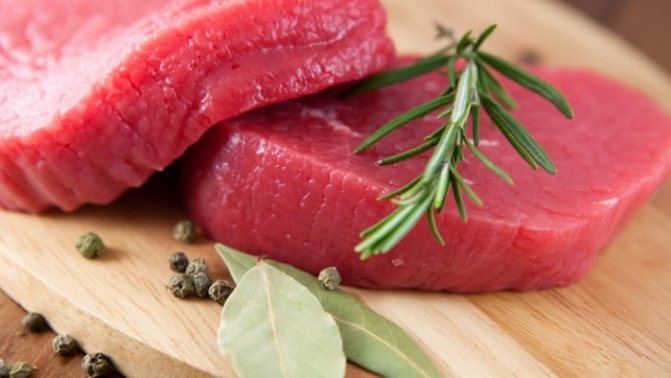
Some babies experience impaired iron absorption. This condition threatens the appearance of iron deficiency anemia. To replenish iron reserves, a nursing woman is recommended to consume the following foods:
- red meat;
- liver and offal;
- apples and apple juice;
- parsley;
- Jerusalem artichoke;
- beet.
If a child experiences a lack of iron, doctors prescribe complementary feeding.
After the birth of the baby, every woman receives recommendations that help to establish the breastfeeding process with maximum benefit for mother and child. Subscribe to our VKontakte group
